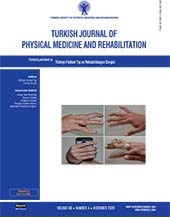Shortest time interval for detecting the progression of knee osteoarthritis on consecutive X-rays
2 Department of Orthopedics and Traumatology, Metin Sabancı Baltalimanı Bone Disseases Training and Research Hospital, Istanbul, Turkey DOI : 10.5606/tftrd.2020.4483 Objectives: This study aims to find the shortest needed time interval between two consecutive anteroposterior (AP) knee X-rays of the same patient to determine the progression of knee osteoarthritis (KOA) by a trained eye.
Patients and methods: In this retrospective study, 2,145 AP knee X-rays of 848 primary KOA patients (331 males, 517 females; mean age 65±9 years; range, 50 to 92 years) followed-up between January 2014 and December 2017 were used. Randomly generated 1,280 pairs of knee X-rays were shown to 14 orthopedic surgeons working in the Department of Orthopedics and Traumatology, and then the physicians were asked to select the second X-ray of the same arthritis knee. The physicians completed the test twice. The patient's age, gender, time interval between two radiographs and the responses of the physicians were recorded.
Results: Our results showed that if the time interval between the two radiographs was six months or more, the correct estimation rates increased gradually. When the time interval was 36 months and more, the ratio reached 92%. The sensitivity and specificity rate of the method was 81%, while the positive predictive value was 86%. However, interestingly, age or gender did not have any effect on this result.
Conclusion: In our study, X-rays taken in less than six months apart could not give additional information about the radiographic progression of KOA. To discern between the progression of KOA, we recommend that there be a 12 to 18-month interval between consecutive X-rays. The data of our study can be used for a routine algorithm to be developed for the evaluation of KOA patients.
Keywords : Knee osteoarthritis, progression, X-ray

















